Photos capture huge explosion as remaining sections of Genoa bridge are demolished
Thousands were evacuated from the area ahead of the controlled explosions.
Rome -- Three warning sirens -- two brief ones followed by a longer one -- preceded the controlled explosions used to bring down the remaining two immense pylons of Genoa’s Morandi Bridge Friday morning.
More than a ton of explosives were used to carry out the delicate engineering feat, which brought about 50,000 tons of concrete crashing to earth without causing injury.
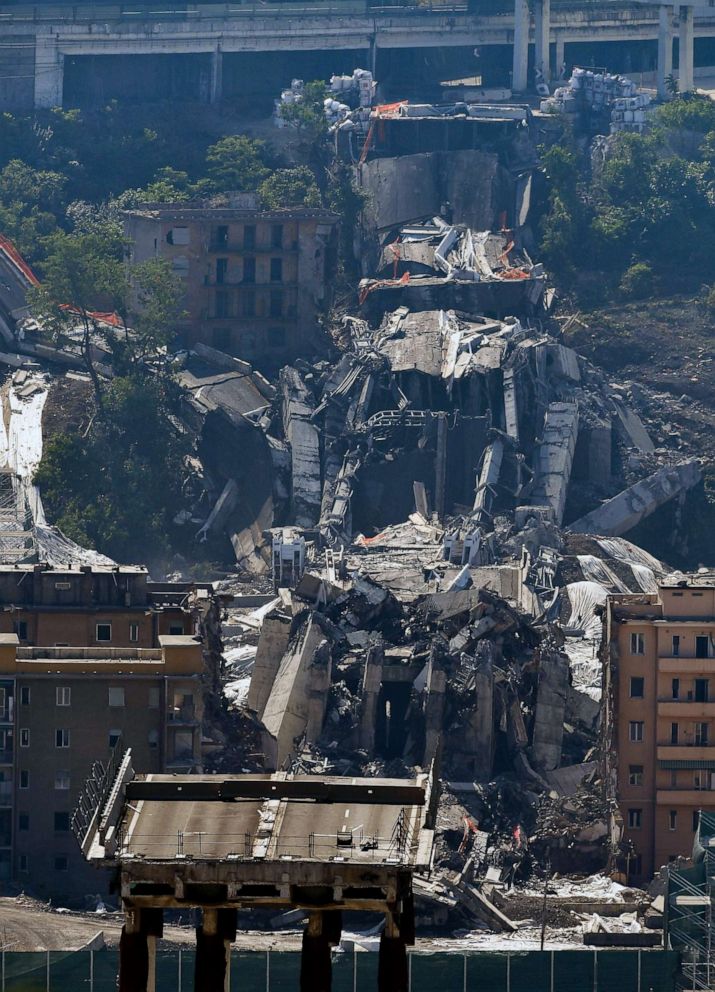
The large-scale operation -- never before tested in Italy -- took place at 9:37 a.m. local time and only lasted about six seconds.
Since the collapse of sections of the highway bridge last August, which killed 43 people, local and government officials have been doggedly working to remove the remaining portions of the bridge and to speed up plans to replace it with a new one, which they hope will be ready by April 2020.
Much of the collapsed bridge had already been dismantled in the past months.
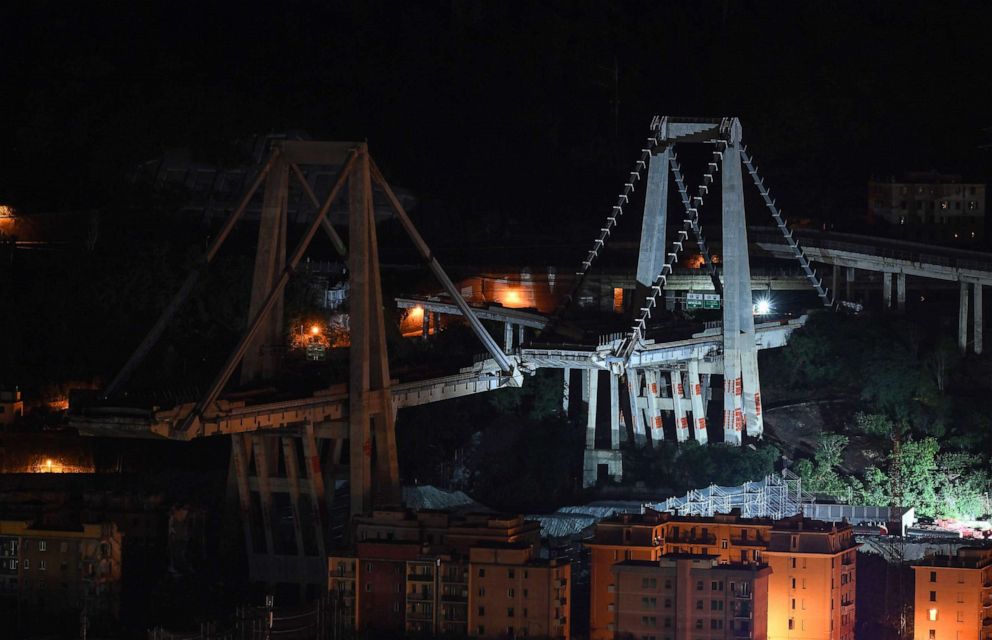
But for months now, engineers and workers have been concentrating on readying the area for the demolition of the two remaining pylons with this morning’s controlled explosions.
To dampen the huge dust cloud expected to engulf part of the city -- and possibly spread to the rest -- workers positioned large quantities of sand and readied ingenious water devices with about 1,500 tons of water on hand. Walls of netting 35 feet high were also installed to contain the dust the water might not reach, and 15-foot mounds of earth, covered in fabric, were placed to cushion the falling concrete.
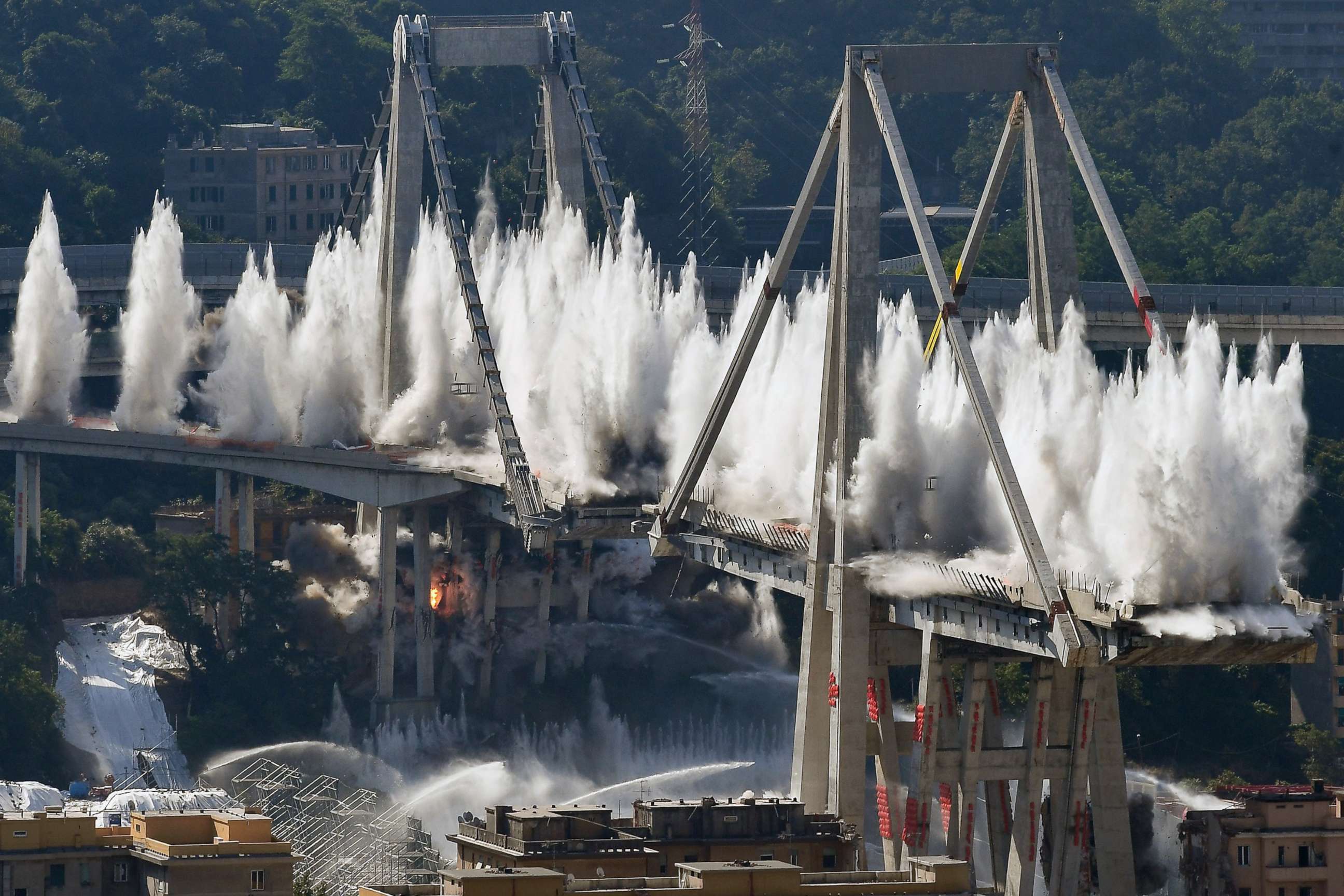
A 2,000-foot range area around the explosion site will remain closed off until it is safe to re-enter. Civil protection officials evacuated about 500 of the elderly and disabled in the area Thursday night prior to the demolition.
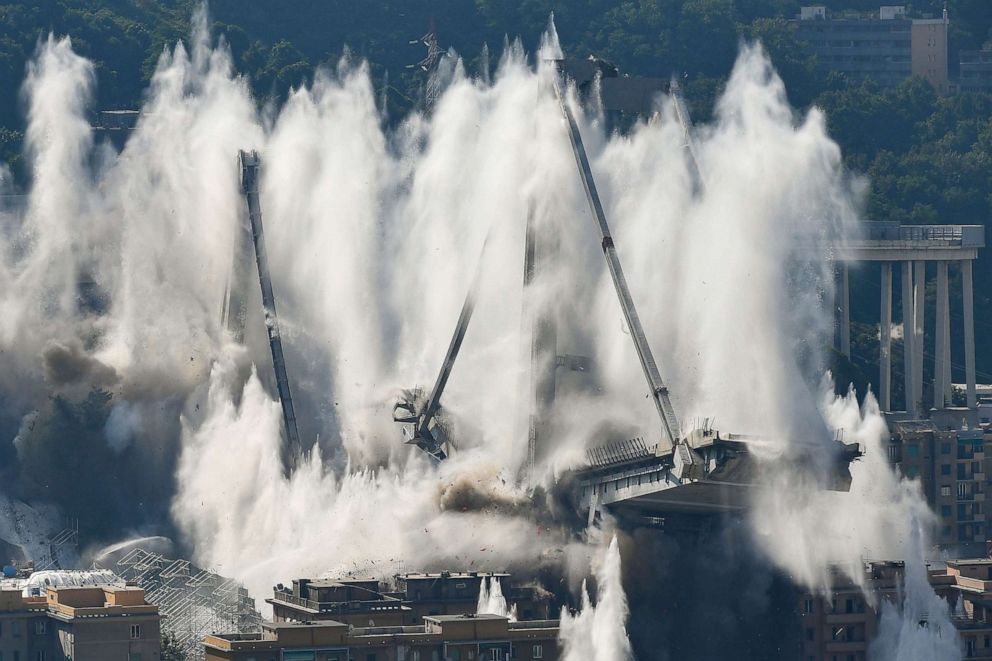
The remaining 3,500 residents had to leave before 7.30 a.m. and will be informed when they can return to their homes, depending on the air quality. Local residents are concerned that there will be dangerously high levels of dust that could possibly contain toxins like asbestos. Experts warned residents to close their fireplaces and windows and use water instead of brushes to remove any dust pile-up when they return to their homes.
Traffic in the area was diverted in the early morning hours, with roads and highways nearby closed and not scheduled to reopen until about 10 p.m Friday.
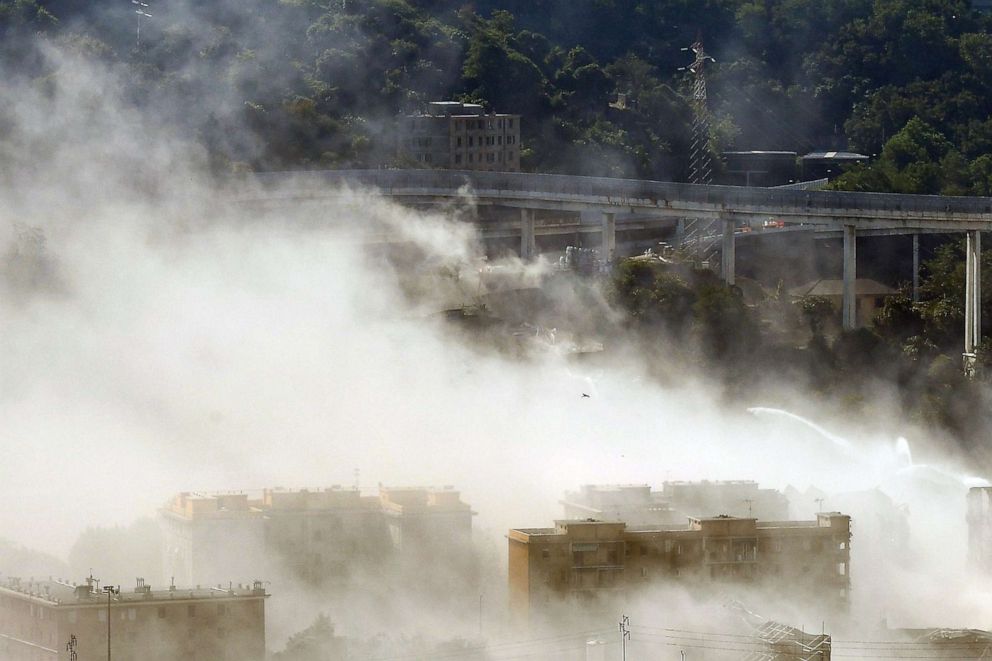
The collapse of the Morandi Bridge, which was built in the 1960s, is believed to have been caused by the rusting of steel cables embedded in the concrete structure, but the investigation into the disaster is still ongoing.



